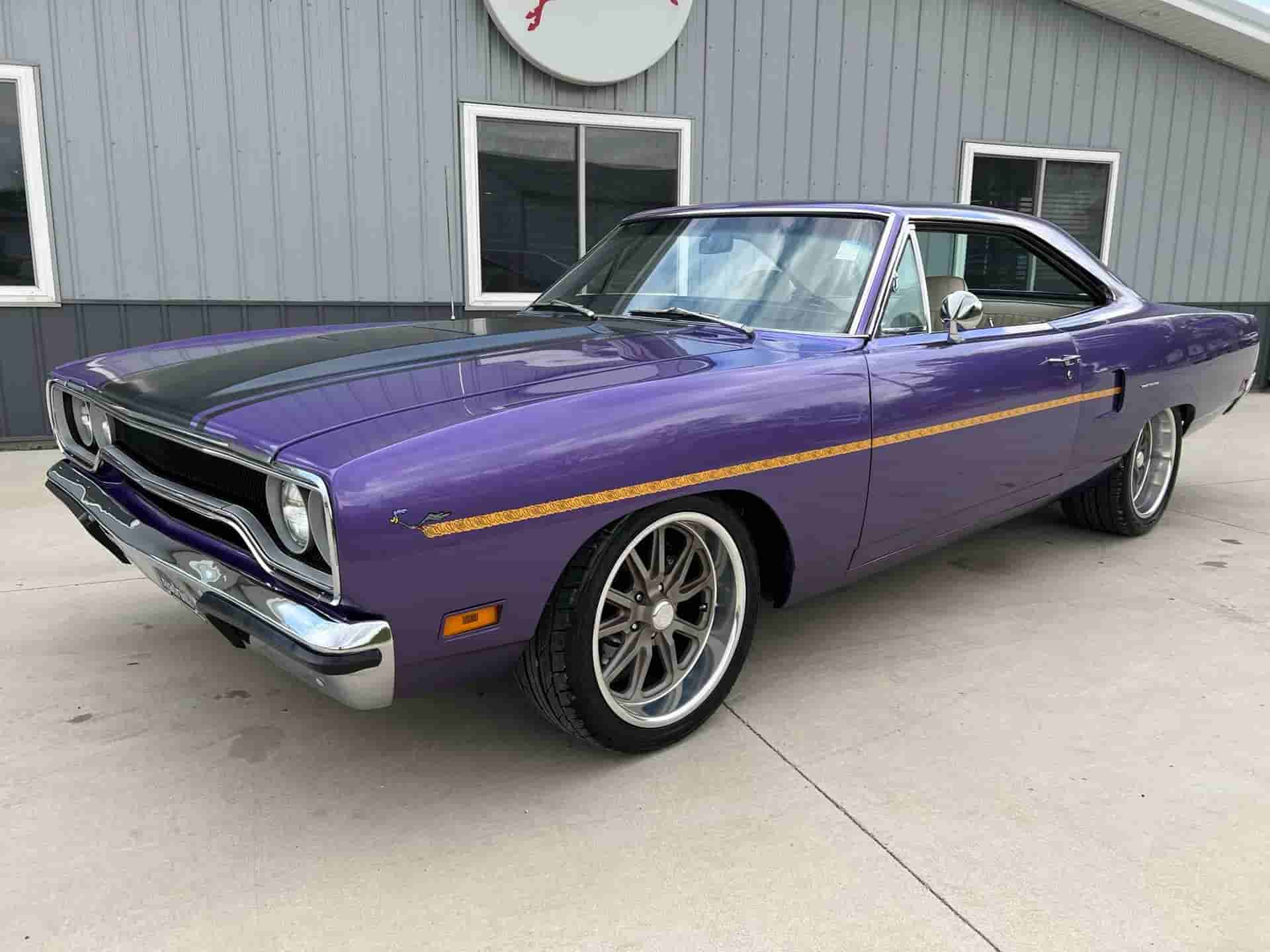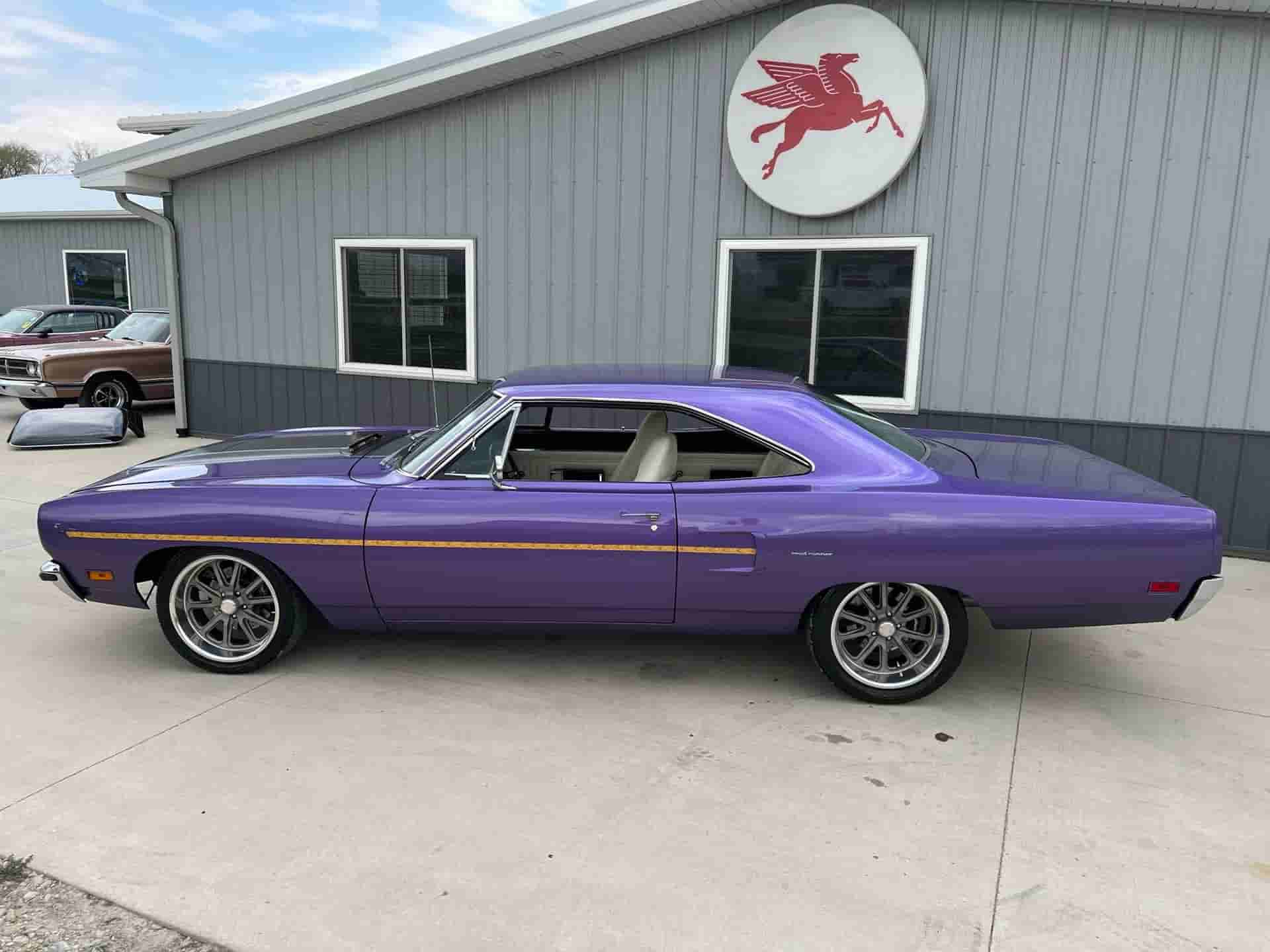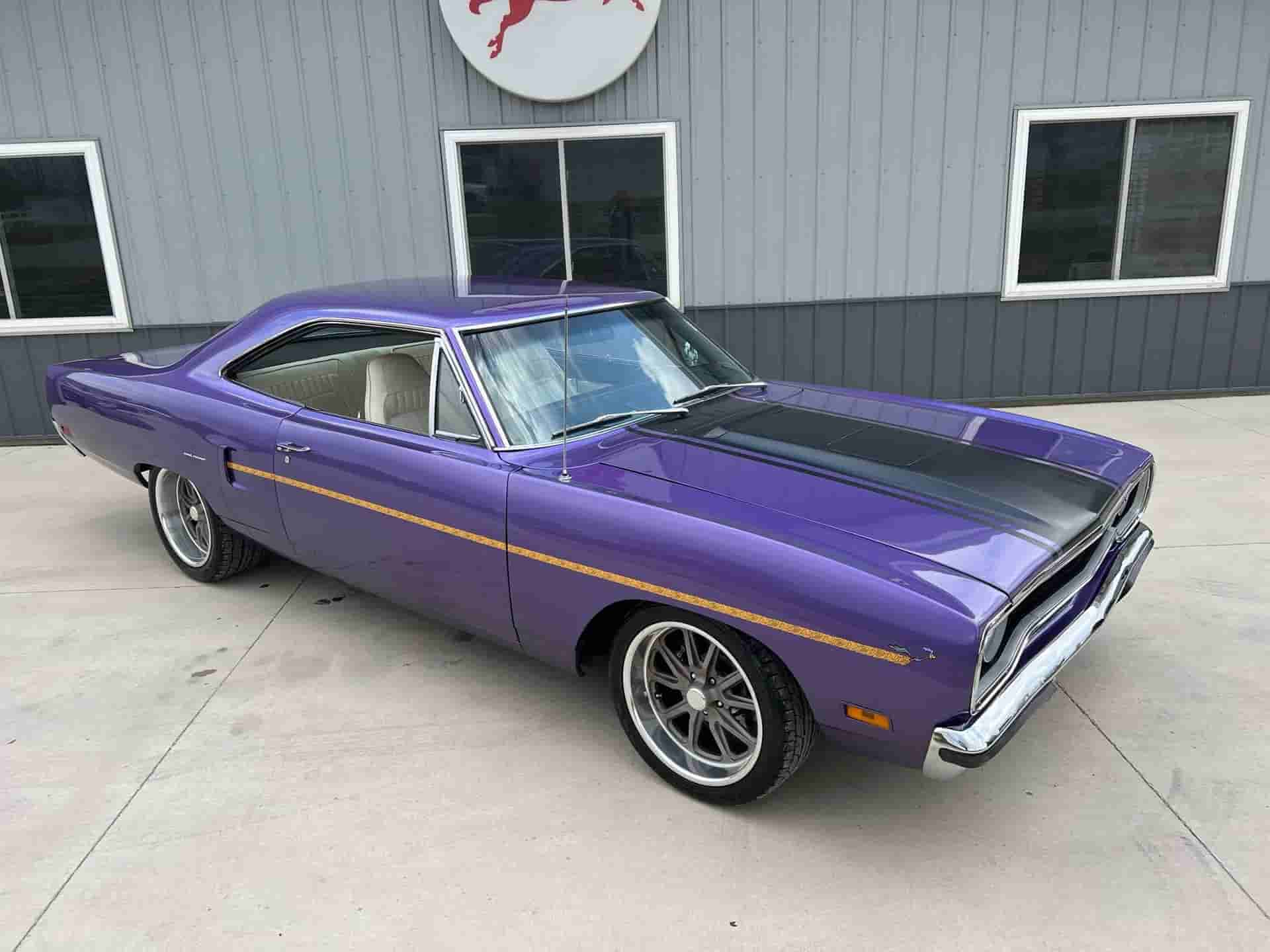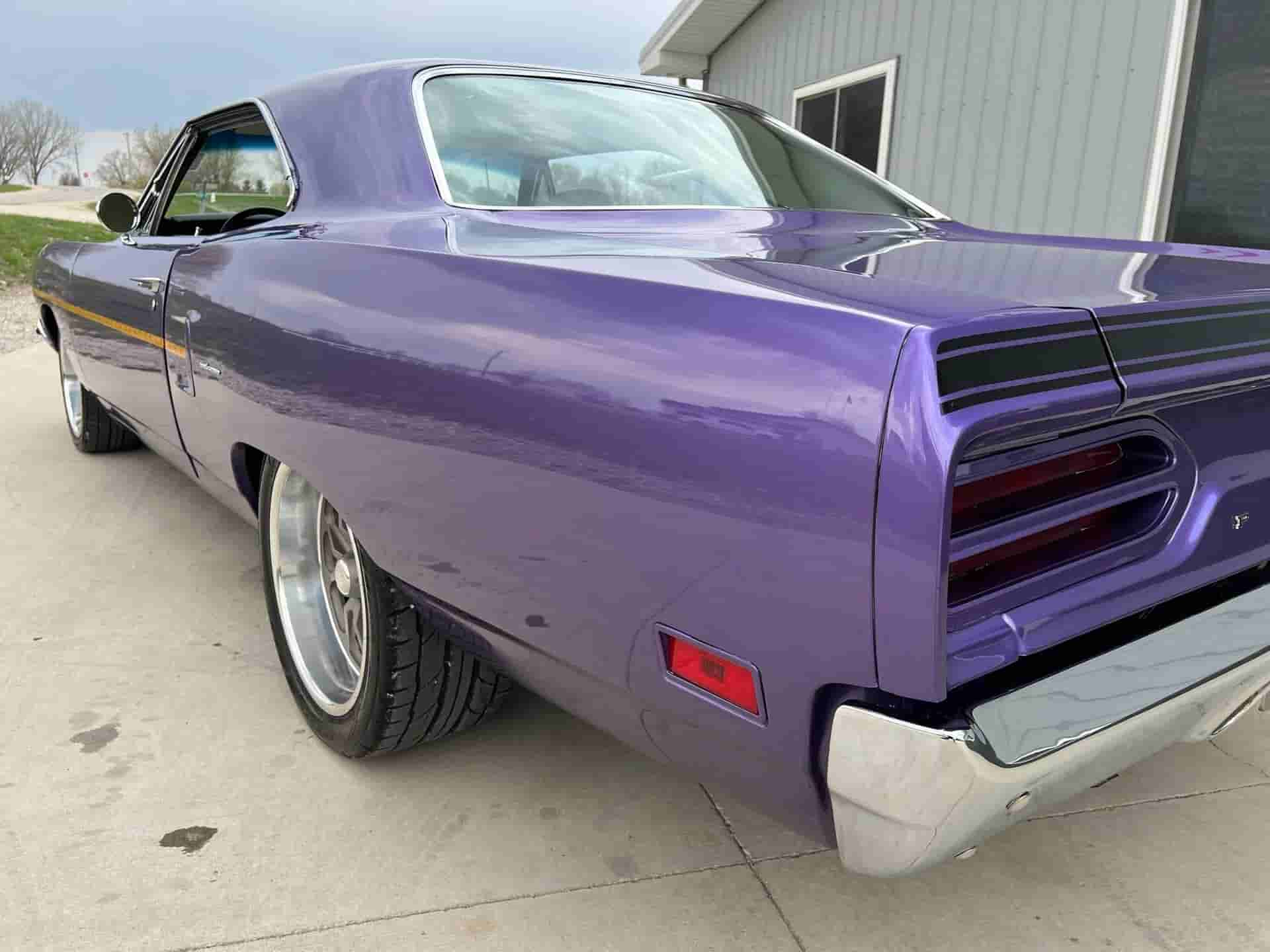Thank you for visiting my website. Please continue to support us so that we can have the motivation to build a better website with more information for you!

Introduction
The 1970 Plymouth Road Runner holds an iconic status in the automotive world, renowned for its impressive performance and unmistakable design. This medium-class muscle car captured the hearts of enthusiasts and became a symbol of power and speed. In this article, we will delve into the various aspects that make the 1970 Road Runner a true beast on the road. From its inception, the Plymouth Road Runner was designed to deliver exceptional performance without compromising on affordability. The 1970 model year further solidified its reputation as a medium-class muscle car, offering a perfect blend of power, style, and accessibility.
The Heart of a Beast: Engine Specifications
At the core of the 1970 Road Runner lies a formidable engine. Powered by a 383 cubic inch V8, this beast roared to life with exhilarating energy. The combination of displacement, compression, and engineering prowess resulted in a motor that demanded attention.To complement its engine, the Road Runner was equipped with a 4-barrel carburetor. This fuel delivery system ensured that an optimal mixture of air and fuel reached the cylinders, maximizing the car’s power output. The 1970 Road Runner showcased its might with an astonishing 330 horsepower. This immense power propelled the car forward, delivering a thrilling driving experience that left enthusiasts in awe.
The Year of Power: 1970 Model Year
The 1970 model year was a turning point for the Plymouth Road Runner. It represented a leap forward in terms of performance, style, and technology, making it a highly sought-after vehicle among muscle car enthusiasts. Building upon its previous successes, the 1970 Road Runner saw significant refinements and updates. Plymouth focused on enhancing the car’s overall performance and appearance, solidifying its place as a top contender in the medium-class segment. The 1970 Road Runner boasted a refreshed exterior design with a more aggressive stance. The front grille received a facelift, featuring a menacing look that exuded power. Bold striping and decals accentuated the car’s muscular physique, capturing the attention of onlookers.

Aesthetics and Design
The exterior of the 1970 Road Runner was a sight to behold. Its sleek lines, sculpted body panels, and pronounced hood scoop all contributed to its unmistakable presence on the road. This car was designed to turn heads and leave a lasting impression. The Road Runner’s 2-door hardtop body style added to its allure. This configuration not only enhanced the car’s aerodynamics but also emphasized its sporty and aggressive nature. It was a true embodiment of the classic American muscle car. One of the most recognizable aspects of the 1970 Road Runner was its distinctive branding. The famous “beep-beep” cartoon decal and bold Road Runner emblems adorned the car, solidifying its identity and leaving no doubt about its heritage.
Performance on the Road
When it came to performance, the 1970 Road Runner lived up to its reputation as a medium-class beast. With its powerful engine and thoughtfully engineered components, the Road Runner delivered exhilarating performance on the road. The 1970 Road Runner was known for its impressive acceleration. The combination of its robust engine and lightweight construction allowed it to launch from a standstill with incredible force. Enthusiasts reveled in the thrill of feeling the raw power as the car surged forward, leaving competitors in the dust. When it came to top speed, the Road Runner proved itself as a formidable contender. Its aerodynamic design and optimized engine performance enabled it to reach impressive speeds that thrilled both drivers and spectators alike. The Road Runner wasn’t just about straight-line speed; it was also designed to handle with finesse. The suspension system was tuned to provide a balance between comfort and responsiveness, allowing drivers to maintain control while navigating corners and curves. Whether cruising on the open highway or tackling winding roads, the Road Runner delivered an unforgettable driving experience.
A Closer Look Inside
While the Road Runner was primarily known for its performance, its interior was not overlooked. Step inside, and you’d find a driver-focused cockpit designed for comfort and convenience during long drives or spirited adventures. The interior of the 1970 Road Runner featured supportive bucket seats that embraced the driver and passengers, ensuring a comfortable ride. Thoughtful details such as plush upholstery, ample legroom, and a well-designed instrument panel added to the overall enjoyment of the driving experience. Inside the Road Runner, subtle styling cues paid homage to its muscle car lineage. From the iconic Road Runner emblem on the steering wheel to the inclusion of performance-oriented gauges, every detail reminded occupants that they were in the presence of a true automotive legend.
Road Runner’s Impact on the Market
The 1970 Road Runner occupied a unique position in the medium price class segment of the market. It offered incredible performance and aggressive styling at a more affordable price point compared to some of its high-end counterparts. This made it a popular choice among performance enthusiasts who sought exhilaration without breaking the bank. During the 1970s, the Road Runner played a significant role in shaping the muscle car industry. Its combination of power, affordability, and eye-catching design set a new standard for what a medium-class muscle car could achieve. The Road Runner’s success inspired other manufacturers to follow suit, resulting in a wave of performance-oriented vehicles that defined the era. When it came to comparing the Road Runner with its competitors, it stood tall. Its unique blend of power, style, and accessibility set it apart from other medium-class muscle cars of its time. Even to this day, the Road Runner’s legacy lives on, with collectors and enthusiasts cherishing these vehicles as symbols of an era when muscle cars ruled the roads.

Collecting the Road Runner
The 1970 Plymouth Road Runner holds a special place in the hearts of collectors worldwide. Its iconic design, powerful performance, and historical significance make it a highly sought-after classic car. Owning a Road Runner is not just about possessing a vehicle; it’s about owning a piece of automotive history. Several factors contribute to the value and desirability of the 1970 Road Runner in the collector’s market. These factors include the car’s condition, rarity, originality, and historical significance. Well-maintained examples with matching numbers and original components tend to command higher prices among collectors. Additionally, limited production numbers and specific trim packages can further increase a Road Runner’s desirability and value. If you’re considering acquiring a 1970 Plymouth Road Runner, there are a few tips to keep in mind. First, conduct thorough research to familiarize yourself with the different options, trim levels, and specifications available for the Road Runner. This will help you make an informed decision and ensure you find the car that best fits your preferences. Second, consider seeking the expertise of a reputable classic car appraiser or inspector before making a purchase. They can provide valuable insights into the car’s authenticity, condition, and potential restoration needs. It’s essential to know what you’re getting into to avoid any surprises down the road. Lastly, connect with fellow enthusiasts and join Road Runner owner clubs or online forums. These communities offer a wealth of knowledge, resources, and support for owners and enthusiasts. You can learn from experienced individuals, share your experiences, and participate in gatherings and events dedicated to the Road Runner.
Maintenance and Restoration
Owning a classic car like the 1970 Road Runner requires proper maintenance to ensure its longevity and performance. Here are some essential maintenance tips to keep your Road Runner running smoothly: Regularly inspect and maintain the engine, including oil changes, spark plug replacements, and belt inspections. Keep the cooling system in optimal condition by monitoring coolant levels and performing regular flushes. Check and replace worn suspension components to maintain optimal handling and ride quality. Preserve the car’s exterior by regularly washing, waxing, and protecting it from the elements. Uphold the authenticity of the car’s interior by preserving original materials and making necessary repairs or replacements. Restoring a classic car like the 1970 Road Runner can be a rewarding but challenging endeavor. Some considerations to keep in mind include: Sourcing original parts: Finding authentic, period-correct components can be a challenge. Patience and diligent searching are key. Rust and corrosion: Classic cars are prone to rust and corrosion. Thoroughly inspect the body and frame for any signs of damage and address them promptly. Authenticity vs. customization: Decide early on whether you want to restore the car to its original factory specifications or customize it to your preferences. Both paths have their merits, so it’s a matter of personal choice. Budgeting and time management: Restorations can be time-consuming and expensive. Create a realistic budget and timeline, and be prepared for unexpected expenses and delays. When restoring a 1970 Road Runner, preserving the car’s authenticity is often a top priority for enthusiasts. Pay attention to details such as paint color, interior materials, and correct badging. Consult historical resources, documentation, and fellow enthusiasts to ensure your restoration project stays true to the original design and specifications.
Road Runner in Popular Culture
The 1970 Plymouth Road Runner made its mark on popular culture through its appearances in movies and television shows. From high-speed chases to iconic moments, the Road Runner became synonymous with power and excitement on the silver screen. The presence of the Road Runner in media played a significant role in shaping the image of muscle cars. Its on-screen performances and reputation for speed and power helped solidify the association between muscle cars and exhilarating action. The Road Runner’s presence in media helped cement the idea that muscle cars were not only powerful machines but also symbols of freedom, rebellion, and the American spirit. The Road Runner’s cultural impact extended beyond movies and TV shows. It became a reference point in music, literature, and even everyday conversations. The car’s name, “Road Runner,” became synonymous with speed and agility, often used to describe anything that moves swiftly and efficiently. Additionally, the Road Runner’s distinctive appearance and performance influenced the design of toys, video games, and merchandise. Its bold colors, aggressive stance, and signature horn sound became instantly recognizable symbols of automotive power and excitement.
The Road Runner Today
In the present day, the 1970 Plymouth Road Runner continues to captivate automotive enthusiasts and collectors. Its iconic design, powerful engine, and historical significance make it a highly sought-after classic car. Owning a Road Runner is not just about owning a vehicle; it’s about owning a piece of automotive history and preserving a symbol of an era. Road Runner enthusiasts have formed clubs and organizations dedicated to the preservation and celebration of these iconic cars. These clubs provide a sense of community, allowing owners and enthusiasts to connect, share knowledge, and showcase their beloved Road Runners at gatherings and events. While many collectors strive to restore their Road Runners to their original factory specifications, others choose to modify and customize their cars to suit their individual tastes and preferences. These modified Road Runners can feature upgraded engines, modern amenities, and personalized touches that enhance both performance and aesthetics. The flexibility of the Road Runner’s design allows for endless possibilities in the realm of customization.

Road Runner in Motorsports
The Road Runner’s performance capabilities also found a home in the world of motorsports. From drag racing to road courses, the Road Runner proved its mettle on the track, leaving a lasting impression on the racing scene. The Road Runner achieved notable success in various racing competitions. Skilled drivers pushed the car to its limits, showcasing its acceleration, speed, and handling capabilities. The Road Runner’s victories solidified its reputation as a true contender in the motorsports arena. To optimize the Road Runner’s performance for racing, modifications were made to enhance its power and handling. These enhancements included engine upgrades, suspension modifications, aerodynamic improvements, and weight reduction. The Road Runner’s involvement in motorsports not only highlighted its potential on the track but also contributed to the ongoing development of performance technologies.
The End of an Era
Sadly, all good things must come to an end. The Plymouth Road Runner met its demise in the early 1970s due to changing market conditions, tightening emissions regulations, and a shift in consumer preferences. The end of the Road Runner marked the end of an era for muscle cars. Several factors played a role in the discontinuation of the Road Runner. The oil crisis of the 1970s led to a demand for more fuel-efficient vehicles, which didn’t align with the Road Runner’s high-performance nature. Additionally, increasing emissions regulations placed restrictions on engine power and design, making it challenging for manufacturers to produce muscle cars that met the requirements. Although the Road Runner’s production came to a halt, its legacy and nostalgic appeal have endured. Enthusiasts and collectors continue to cherish and celebrate the Road Runner, keeping its spirit alive through their passion and dedication. The final years of the Road Runner’s production are remembered as a testament to its performance and the golden era of American muscle cars.
Summary and Reflection
The 1970 Plymouth Road Runner, a medium-class beast, left an indelible mark on automotive history. Its powerful 383 C.I. V8 engine, distinctive design, and exceptional performance capabilities set it apart from its competitors. With its reputation as a no-frills muscle car, the Road Runner captured the hearts of enthusiasts and became an icon of speed and power. The Road Runner’s significance in automotive history cannot be overstated. It represented a time when performance and power ruled the roads, captivating a generation with its bold presence and exhilarating performance. The Road Runner embodied the spirit of American muscle cars and left an enduring legacy that continues to inspire and captivate enthusiasts today. Even decades after its production ended, the allure of the Road Runner remains strong. Its timeless design, raw power, and cultural impact ensure its place in the hearts of automotive enthusiasts and collectors. The Road Runner is not just a car; it’s a symbol of an era, a representation of the passion and innovation that defined American automotive culture. As we reflect on the 1970 Plymouth Road Runner, we recognize its role in shaping automotive history and its lasting impact on popular culture. From its powerful engine and captivating design to its appearances in movies and TV shows, the Road Runner continues to evoke excitement and admiration. Whether you’re a collector, an enthusiast, or simply someone who appreciates the beauty of classic cars, the 1970 Plymouth Road Runner stands as a testament to the golden age of American muscle. Its power, performance, and enduring allure make it a true medium-class beast that will forever hold a special place in automotive history.
